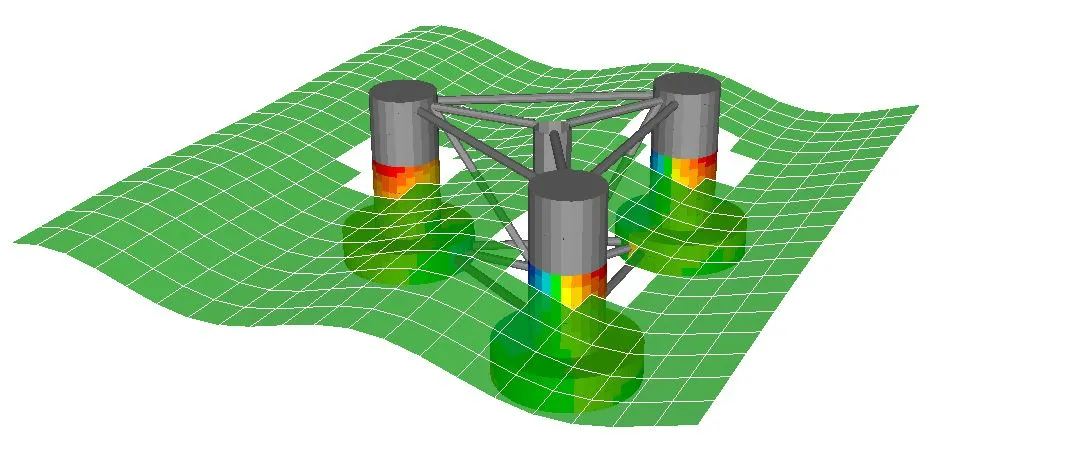OWT-11 Hydrodynamic analysis of floating offshore wind foundation - frequency domain
This course introduces the participants to the Sesam programs for wave load analysis of floating offshore wind foundation based on the frequency domain methodology.
Description
As part of the integrated analysis of floating offshore wind, the hydrodynamic coefficients and wave excitation forces of the foundation, required by the coupled analysis, are calculated in HydroD/Wadam by performing a frequency domain hydrodynamic analysis.
This course focuses on the hydrodynamic analysis in frequency domain, including calculating the global motion responses and transferring loads to structural model for subsequent structural analysis. Short- and long-term statistics are also included.
In this course, HydroD is the main GUI tool, supported by solver Wadam. Postresp is used to display the frequency domain results and perform statistical analysis. Xtract is used to view the results graphically. Sestra is used for the structural analysis.
Learning objectives
The following topics will be covered:
- Perform global hydrodynamic response analysis
- Transfer loads to structural analysis
- Compute short- and long-term statistics
The exercise is based on a floating offshore wind foundation in semi-submersible type.
Target group
Engineers involved in design, analysis, or verification of floating offshore wind structure.
Duration:
2 days
Prerequisite
It is required that the participants are familiar with hydrodynamic analysis.
It is beneficial that the participants have attended OWT-10 Modelling of floating offshore wind foundation or have similar experience.
Description
As part of the integrated analysis of floating offshore wind, the hydrodynamic coefficients and wave excitation forces of the foundation, required by the coupled analysis, are calculated in HydroD/Wadam by performing a frequency domain hydrodynamic analysis.
This course focuses on the hydrodynamic analysis in frequency domain, including calculating the global motion responses and transferring loads to structural model for subsequent structural analysis. Short- and long-term statistics are also included.
In this course, HydroD is the main GUI tool, supported by solver Wadam. Postresp is used to display the frequency domain results and perform statistical analysis. Xtract is used to view the results graphically. Sestra is used for the structural analysis.
Learning objectives
The following topics will be covered:
- Perform global hydrodynamic response analysis
- Transfer loads to structural analysis
- Compute short- and long-term statistics
The exercise is based on a floating offshore wind foundation in semi-submersible type.
Target group
Engineers involved in design, analysis, or verification of floating offshore wind structure.
Duration:
2 days
Prerequisite
It is required that the participants are familiar with hydrodynamic analysis.
It is beneficial that the participants have attended OWT-10 Modelling of floating offshore wind foundation or have similar experience.
